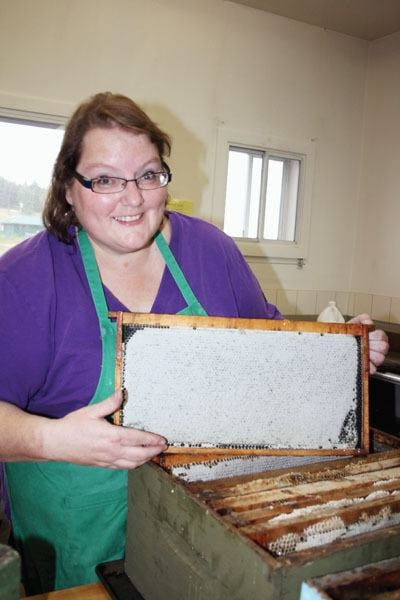Starting a honeybee hive is a fairly simple procedure, and the results are sweet.
"One of the most familiar insects in the world is the honeybee, and they play a key role in the human and natural world," says Beekeepers Support Group (BSG) member Jane Peters.
She adds some plants will not produce fruit at all without the help of honeybees.
"People may think of dandelions as just weeds, but they are an important plant for the bees, providing a vital source of nectar and pollen early after harsh winters."
Starting a new hive is relatively inexpensive, says another BSG member Kate Adams. She notes basic equipment cost between $250 and $500, and bees cost about $150.
A beehive is constructed with bottom boards, frames and a foundation that hold sheets of beeswax foundations, which bees use to build straight combs, brood chamber or hive body, called a "super" which holds 10 frames of comb; the queen excluder (optional) a device that keeps the queen in the brood nest and honey "supers" that bees use to store surplus honey. There’s an inner cover, which prevent bees from attaching the comb to the outer cover, and the outer cover that provides weather protection.
"Honey bees are social insects, with a marked division of labour between the various types of bees in the colony," says Adams. "The colony consists of a queen, drones and workers."
She adds they each have an important job to do, as it requires teamwork to make honey.
The Community Kitchen started three hives last year, says organizer Trish Chung, but lost one over the winter.
"We will be changing how we winter them this year."
Chung adds wintering is the most difficult part of beekeeping. This year they will try to insulate the hives with insulation between two pieces of tar paper, as well as making sure the bees have enough food for the winter.
"The bees thrive here with all of our flowers and vegetables." Chung notes they will probably get close to 100 pounds of honey this year, and after their own use for the community kitchen, they will sell the remainder at different community events.
For more information, contact Peters at snosibe@gmail.com or Adams at 250-397-2792 or e-mail 2011.kate.adams@gmail.com.
